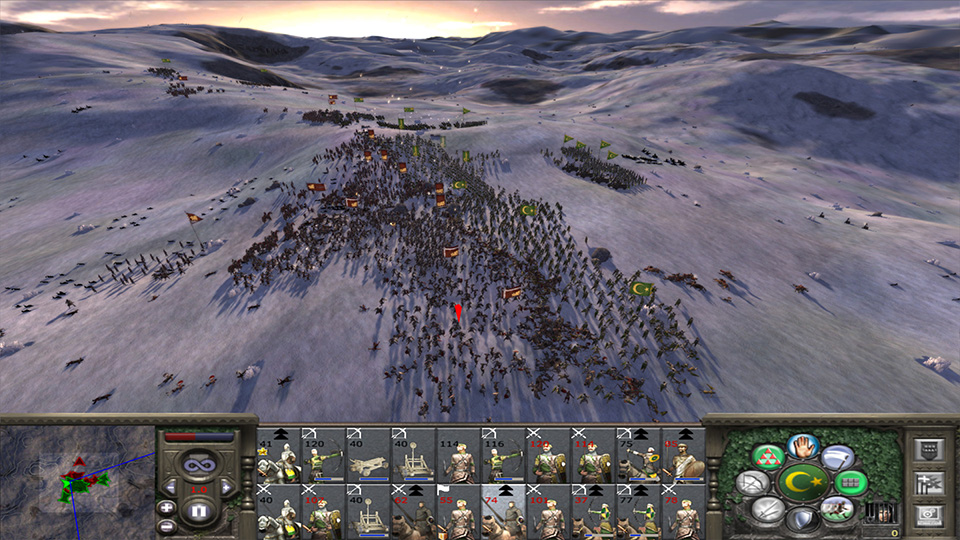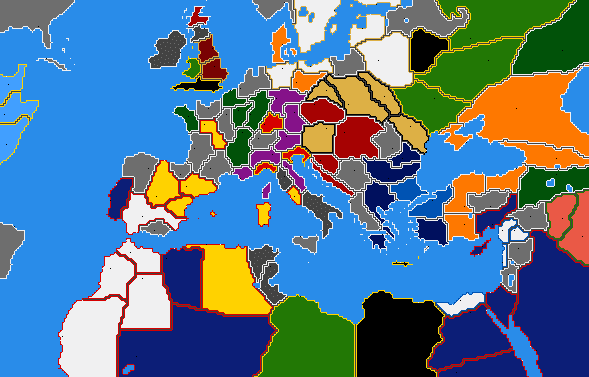
The typical chariot was worked by two men: one would be a bowman and fire at the enemy forces, while the other would control the vehicle. The power of the chariot as a device both of transportation and of battle became the central weapon of the peoples of the Ancient Near East in the 2nd millennium BC. The lack of armor causes it to be extremely vulnerable to spears, pikes, etc. The major drawback of the use of chariots is similar to one of its advantages, the fact that it is light. Improvements in the ability to train horses soon allowed them to be used to pull chariots, possibly as early as 2100 BC, and their greater speed and power made chariots even more efficient. The chariots were light enough that they could easily be floated across rivers. First pulled by oxen and donkeys, they allowed rapid traversing of the relatively flat lands of the Middle East. The first solution to this was the chariot which became used in the Middle East from around 1800 BC.

The first military power to profit from these innovations was the Neo-Assyrian Empire, which achieved a hitherto unseen extent of centralized control, the first " world power" to extend over the entire Fertile Crescent (Mesopotamia, the Levant and Egypt).Īs states grew in size, speed of movement became crucial because central power could not hold if rebellions could not be suppressed rapidly. The main division within the ancient period is rather at the beginning Iron Age with the introduction of cavalry (resulting in the decline of chariot warfare), of naval warfare ( Sea Peoples), and of course the development of an industry based on ferrous metallurgy which allowed for the mass production of metal weapons and thus the equipment of large standing armies. The characteristic properties of medieval warfare, notably heavy cavalry and siege engines such as the trebuchet were first introduced in Late Antiquity. No clear line can be drawn between ancient and medieval warfare. Cavalry would, however, not play any major role until the invention of the stirrup (for shock and heavy cavalry, such as knights) or thumb ring (for horse archers). This balance would eventually change as technology allowed for chariots, cavalry, and artillery to play an active role on the field. These forces would ideally be combined, thus presenting your opponent with a dilemma: group your forces and leave them vulnerable to ranged, or spread them out and make them vulnerable to shock. This infantry would be divided into ranged and shock, with shock infantry either charging to cause penetration of the enemy line or holding their own. Infantry were at this time the dominant form of war, partially because the camel saddle and the stirrup were not yet invented. Early armies in Egypt and China followed a similar pattern of using massed infantry armed with bows and spears. Early ancient armies continued to primarily use bows and spears, the same weapons that had been developed in prehistoric times for hunting. These new armies could help states grow in size and became increasingly centralized. Thus, organized armies developed for the first time.

While the bulk of military forces were still farmers, the society could support having them campaigning rather than working the land for a portion of each year. Beginning in Mesopotamia, states produced sufficient agricultural surplus so that full-time ruling elites and military commanders could emerge. The development of first city-states, and then empires, allowed warfare to change dramatically. The difference between prehistoric and ancient warfare is less one of technology than of organization. In Japan, the ancient period can be taken to end with the rise of feudalism in the Kamakura period in the 12-13th century. In India, the ancient period ends with the decline of the Gupta Empire (6th century) and the beginning of the Islamic conquests from the 8th century. In China, it can also be seen as ending with the growing role of mounted warriors needed to counter the ever-growing threat from the north in the 5th century and the beginning of the Tang Dynasty in 617. In Europe and the Near East, the end of antiquity is often equated with the fall of Rome in 476, and the wars of the Eastern Roman Empire Byzantium in its Southwestern Asian and North African borders and the beginnings of the Muslim conquests in the 7th century. Ancient warfare is war as conducted from the beginnings of recorded history to the end of the ancient period.


 0 kommentar(er)
0 kommentar(er)
